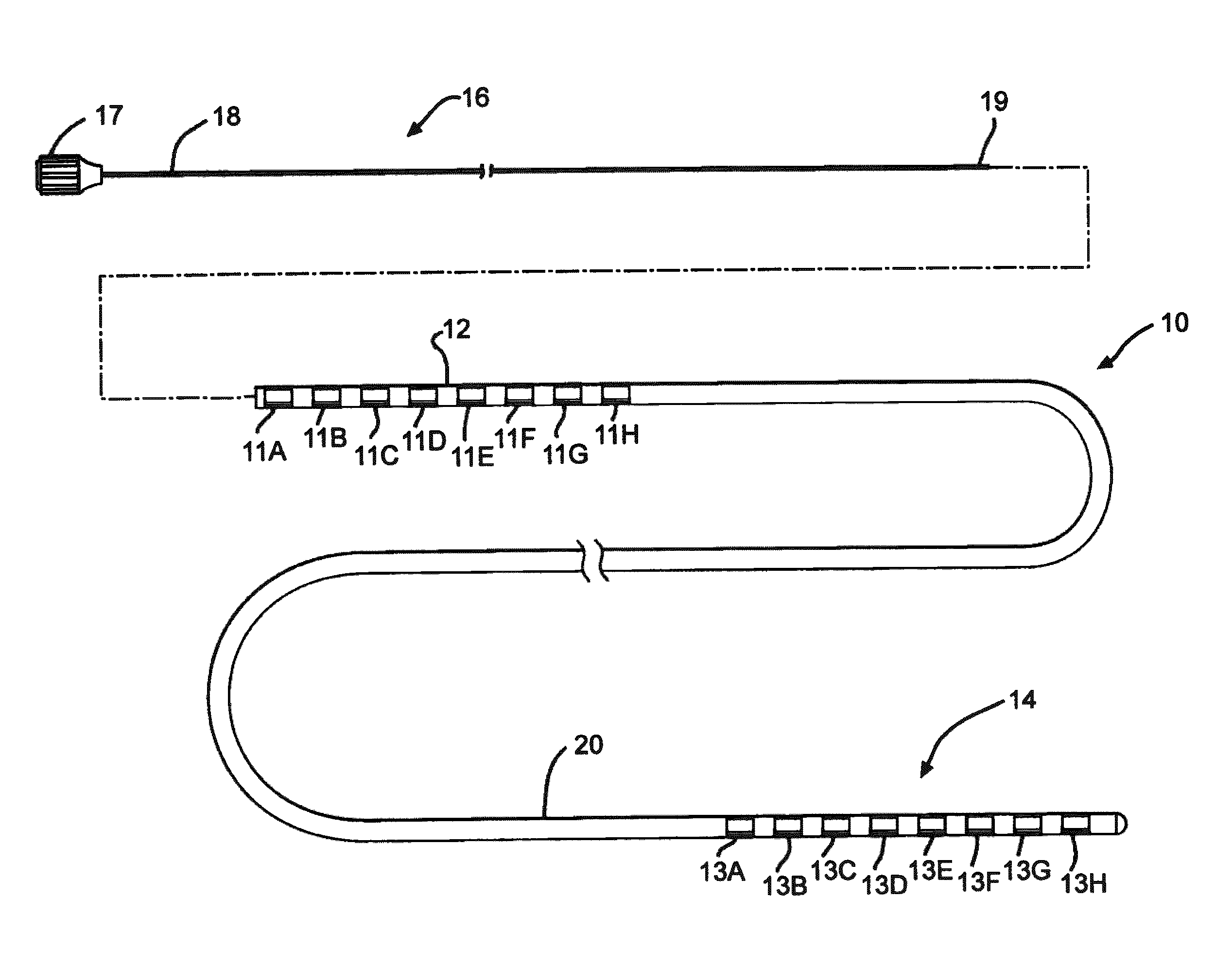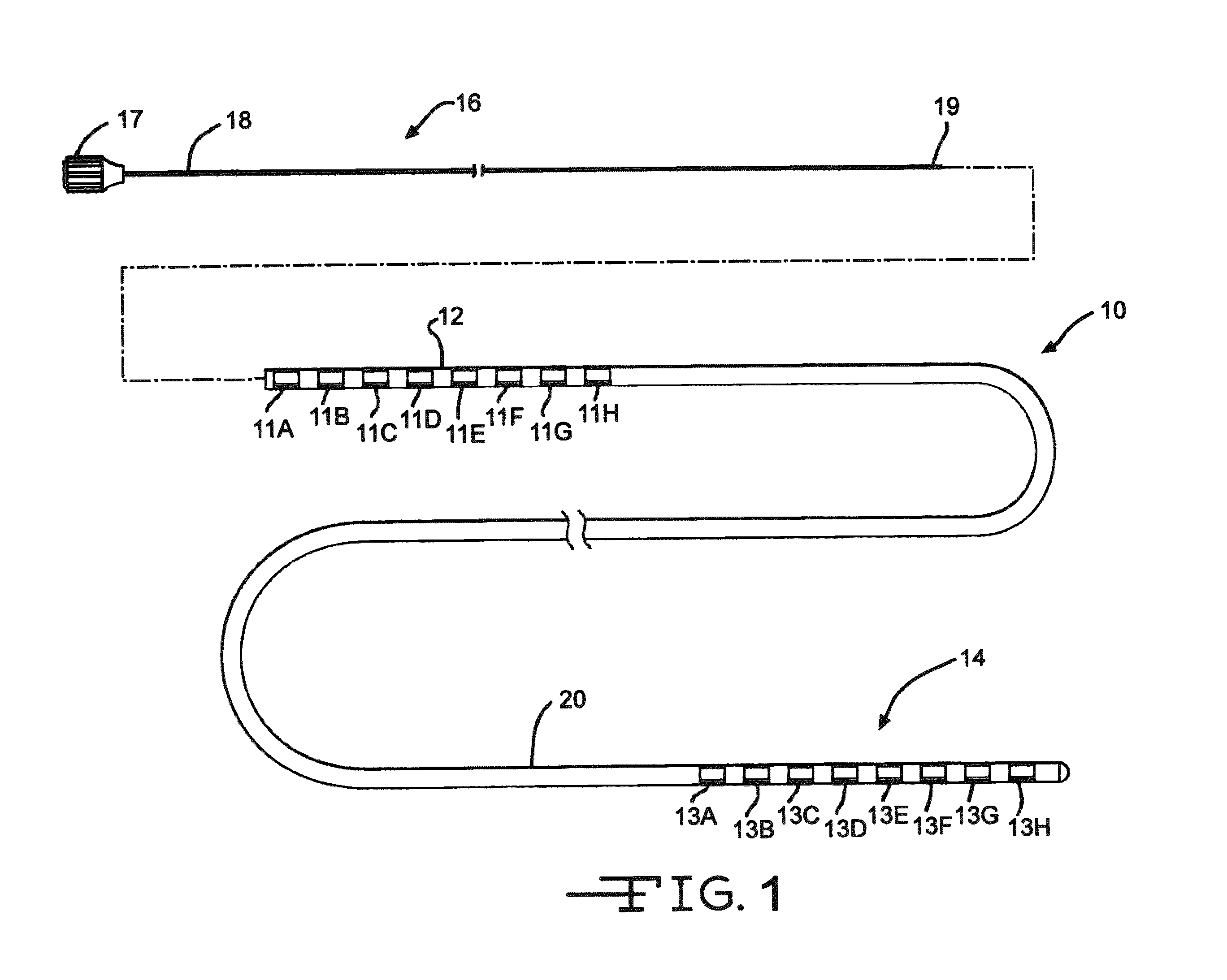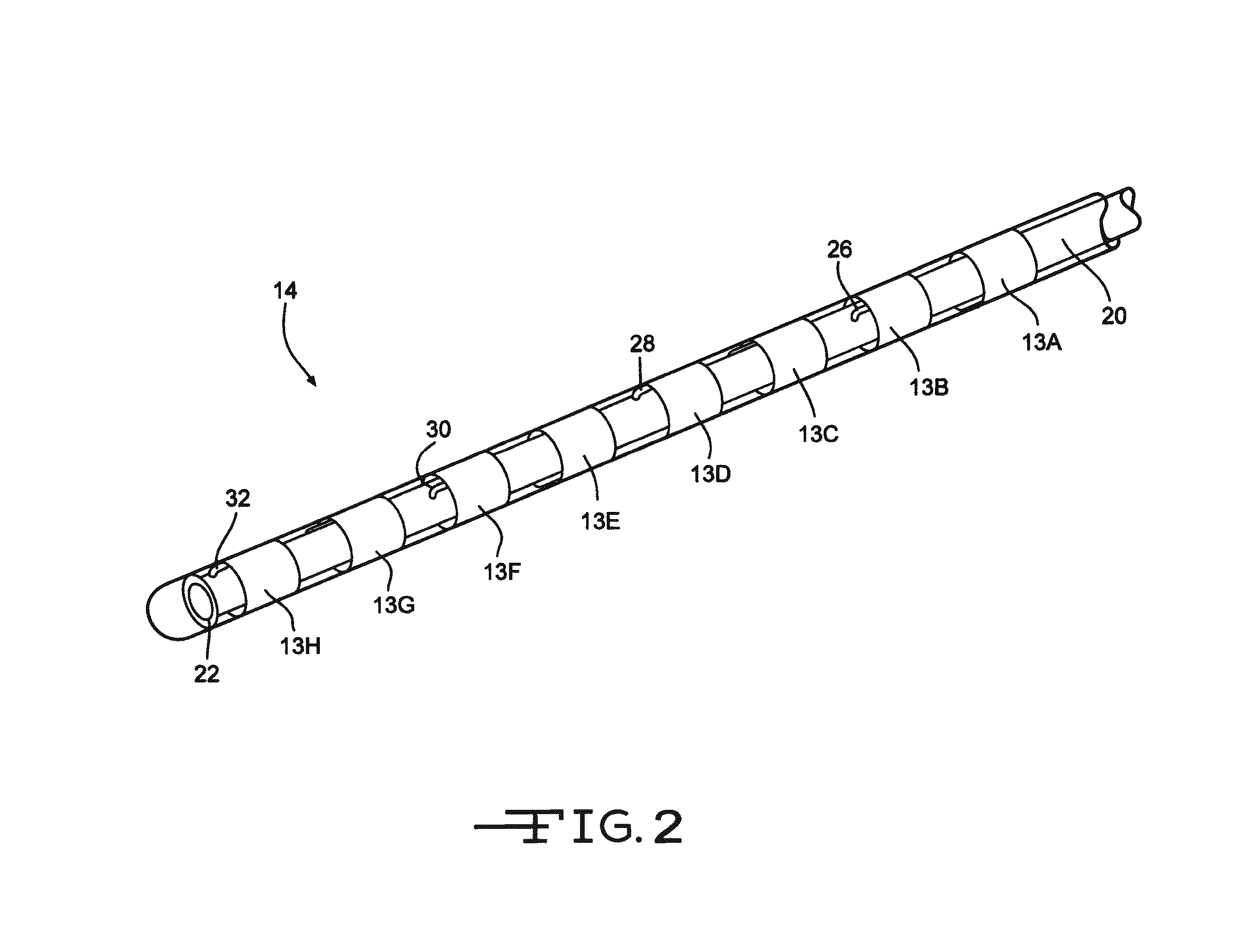Stimulation lead design and method of manufacture
a technology of stimulation lead and manufacturing method, which is applied in the direction of internal electrodes, basic electric elements, therapy, etc., can solve the problems of unusable lead removal, defective or inoperable electrical leads, and increase patient stress, so as to improve electrical conduction stability, increase mechanical stability, and prevent the effect of polymer material migration
- Summary
- Abstract
- Description
- Claims
- Application Information
AI Technical Summary
Benefits of technology
Problems solved by technology
Method used
Image
Examples
Embodiment Construction
[0029]FIG. 1 illustrates an electrical stimulation lead 10 according to the present invention for delivering therapeutic electrical stimulation. The stimulation lead 10 comprises a proximal portion 12 and a distal portion 14. Within the proximal portion 12 and the distal portion 14, respectively electrode rings 11A-11H and 13A-13H are attached to the outer surface of the polymer lead body 20. The lead body 20 is comprised of polyurethane polymer. The lead body 20 can also be comprised of alternate materials such as silicone, polyethylene, polyimide, PEEK and other biocompatible and biostable polymeric materials.
[0030]Each of the electrode rings 11A-11H and 13A-13H has an annular shape extending 360° around the outside surface of the stimulation lead body 20. Although eight electrode rings are depicted in both proximal portion and distal portions12, 14 of FIG. 1, the number of electrode rings could range from one to as many as about thirty six or more depending on the length of the s...
PUM
| Property | Measurement | Unit |
|---|---|---|
| diameter | aaaaa | aaaaa |
| diameter | aaaaa | aaaaa |
| length | aaaaa | aaaaa |
Abstract
Description
Claims
Application Information
 Login to View More
Login to View More - R&D
- Intellectual Property
- Life Sciences
- Materials
- Tech Scout
- Unparalleled Data Quality
- Higher Quality Content
- 60% Fewer Hallucinations
Browse by: Latest US Patents, China's latest patents, Technical Efficacy Thesaurus, Application Domain, Technology Topic, Popular Technical Reports.
© 2025 PatSnap. All rights reserved.Legal|Privacy policy|Modern Slavery Act Transparency Statement|Sitemap|About US| Contact US: help@patsnap.com



